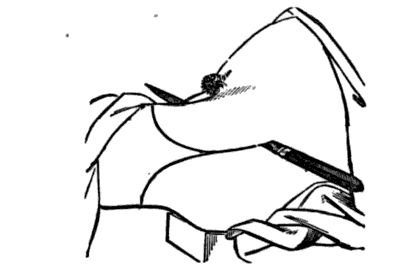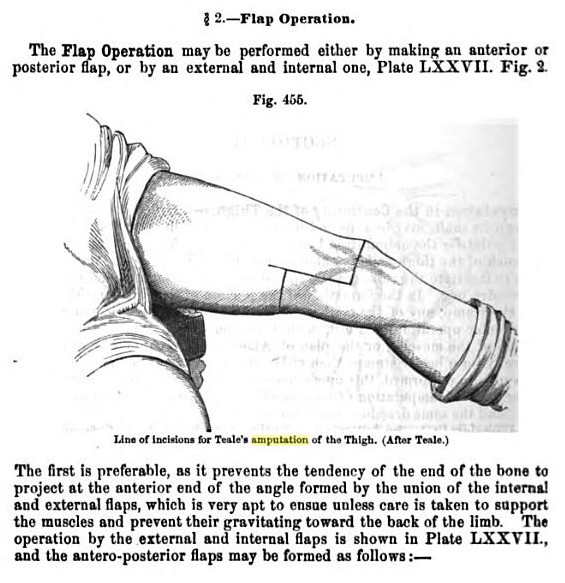Authentic Period Civil War Medical Items Civil War Surgical SetsMedical Text Books and Surgical Manuals Articles on Civil War Medicine See our Articles On Civil War Medicine |
Amputations In Military Surgery During The Civil War
Amputations in military surgery during the Civil War were frequent and a procedure that those interested in Civil War medicine are used to hearing about. There are gruesome factual stories and pictures from the era that depict the procedure. In this document amputations will be described as to give the reader a better understanding of when amputations were to be carried out. Next the subject of the various kinds of amputations will be discussed and illustrated with period engravings directly from the manuals themselves.
by Kevin Thompson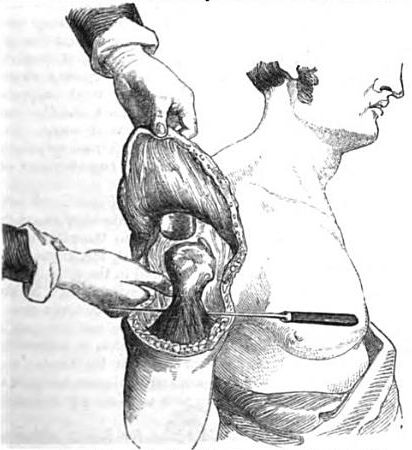
For reference purposes and to give credit to where this information was derived, here are the sources of this information:
A Manual of Military Surgery and Hygiene by Frank Hastings Hamilton
The Science and Art of Surgery by Eric Erichsen
The Medical and Surgical History of the War of the Rebellion
On Military and Camp Hospitals and the Health of Troops in the Field by Baudens
Illustrated Manual of Operative Surgery and Surgical Anatomy by Bernard & Huette
The Call For Amputations During The Civil War
Medicine on the battlefield during the Civil War was crude at times and good at best. With only a surgeon or two with an assistant surgeon to a regiment there was a good chance the wounded would severely overwhelm the medical personnel. The problem was compounded by the type of injuries suffered on the battlefield: gunshot and explosive wounds. These type wounds carried many types of injuries with them, none more severe than, comminuted fractures, compound fractures, and wounds of the joints. The goal of the surgeon in all cases of amputation was to leave as much of the limb intact as possible while giving the patient the best chance of survival.
Comminuted fractures are those fractures where the bone is either broken, splintered, or crushed into a number of different pieces. It does not take long to understand how a projectile, such as the minie ball, could produce such an injury, The minie ball, and other related projectiles that were fired from a rifle, were relatively slow moving and large. When the human body was struck at the bone the velocity of the projectile did not allow a “clean exit.” This produced a shattering effect at the point of impact. In general when a comminuted fracture occurred with rupturing of the principal artery or nerve of a large limb it demanded amputation. It is interesting that Hamilton states that fractures involving contusions demanded amputations more often than those that created a laceration. Also when a fracture injury occurs with a laceration of a main artery, amputation is not always necessary if the artery can be tied.
Compound Fractures are those fractures that produce the bone protruding from the skin. As in injuries producing a comminuted fracture the compound fracture may require amputation if sustained in a large limb, such as the leg, thigh, the arm, or forearm. Amputation during the Civil War was almost always performed if the large limb had severed principal arterial damage or nervous trunk damage.
Wounds to the joints almost always needed amputation during the Civil War. Those wounds include injuries sustained to the knee joint, elbow joint, shoulder joint, wrist, ankle, and hip joint. Amputations made at these joints are also referred to as disarticulations. When an injury was taken to the arm below the forearm, that required amputation, it was common to amputate through the elbow joint even though it was thought better by some to leave some of the radius and ulna. This was also the line of thinking when an amputation was required of the upper arm, leaving a few inches below the humerus. To prevent exposing the patient to inflammation and spread of trouble upwards the road more traveled was disarticulation. Wounds of the hand and feet are more complicated because of small bones and will not be discussed in this article. I will note however that disarticulations took place at the smallest of joints of the toes and fingers. Amputation at the knee joint was normally carried out rather than at the thigh. Baudens comments on this procedure in the text, “On Military and Camp Hospitals”, which describes the War in the Crimea. The preference for him was to amputate in the knee joint rather than below the joint or the thigh.
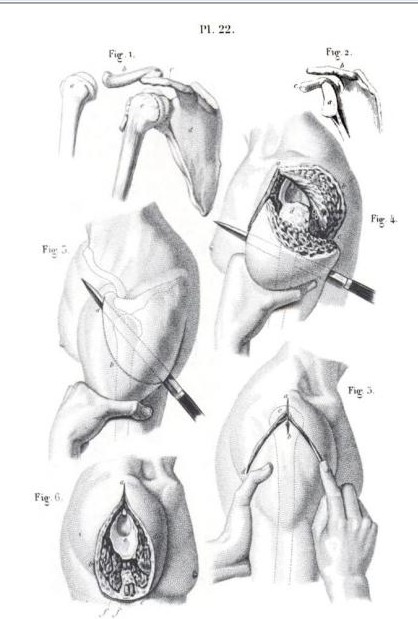
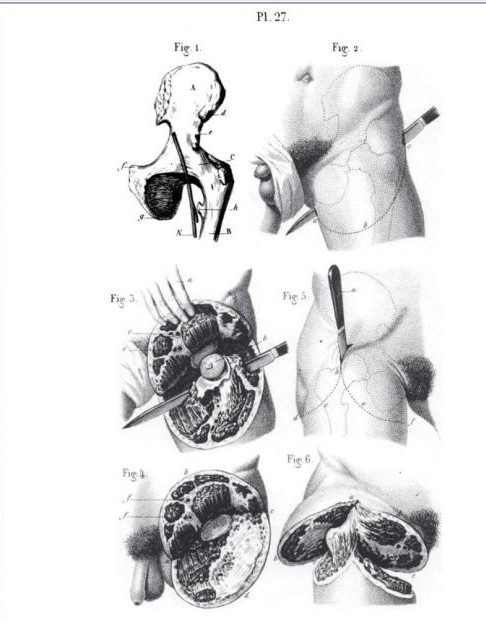
Amputation Procedures Used In Civil War Medicine
Before the Civil War, amputations were used for many many years and provided data for the surgeons that used amputations in the War. Amputations were not only used in military practice but also in civil practice to treat injuries sustained in accidents as well as other issues such as tumors of the bone. The data used was supplied to the United States surgeons by texts written by doctors such as Tavernier, Sir Astley Cooper, G.J. Guthrie, Paul Eve, Fergusson, and many others. Much of the data used came from the War of the Crimea which took place from 1853-56 and was considered to be the 1st modern war.
There were 2 main methods used to amputate large limbs during the War: Flap and Circular Amputations. In the field the flap method was more widely used where time was a factor. With this method the bone was dissected and flaps of deep muscle and skin were used to close the operation. When implementing the flap method it was imperative to cut the bone away a few inches above the place where the flaps were brought together.
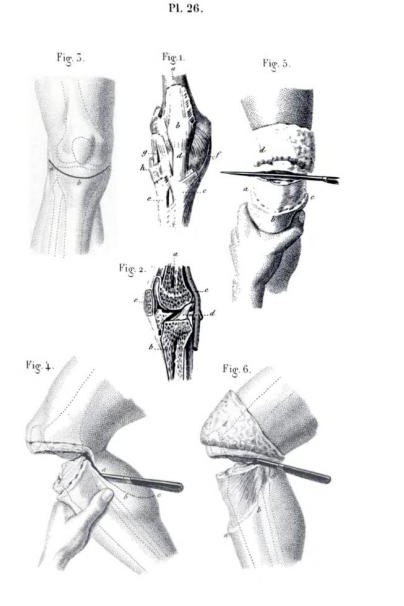
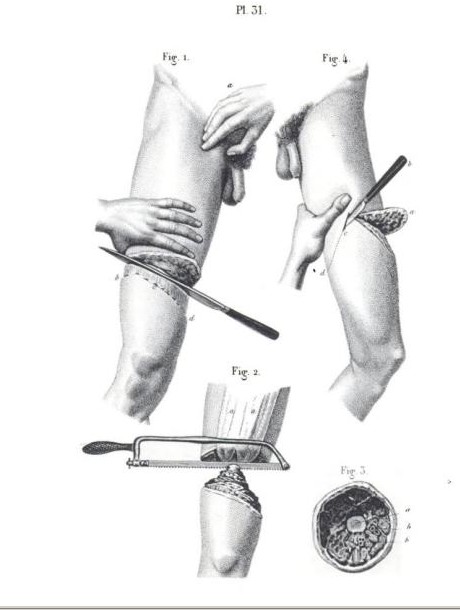
The flap method presented a problem when the patient was to be transported long distances soon or directly after the surgery. The muscles that are used in the flaps to cover became gangrenous when moving the patient about. G.J. Guthrie recommended the circular method because the coverings were made primarily of skin and surface muscle. In military surgery, the flap procedure brought about more sloughing and secondary hemorrhages than that of circular amputation. This was especially noticed after severe battles.
